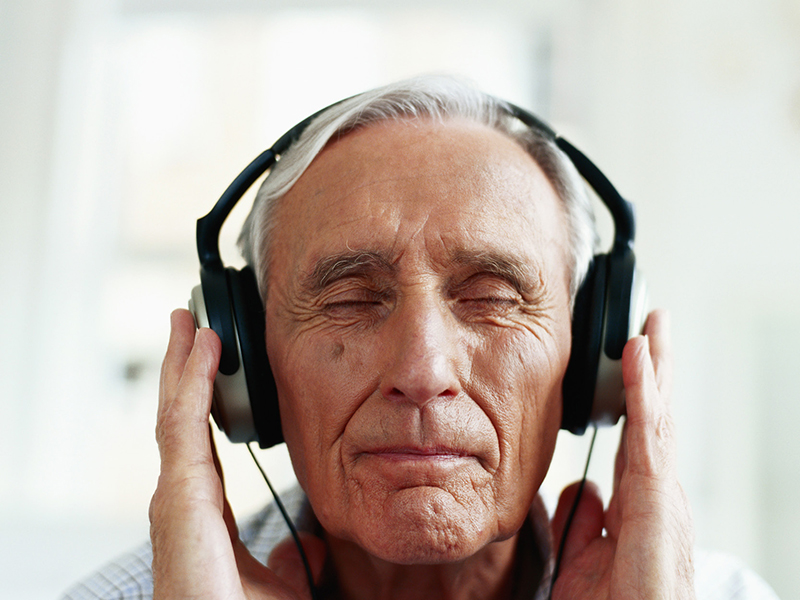Shortly after he got his new hearing aids, Tom Sawyer heard a strange pinging coming from his car tires.
The 65-year-old Elizabeth City, North Carolina, man realized it was the sound of rocks hitting the treads as he drove. He hadn’t noticed it before. Actually, he hadn’t been able to hear that before. But thanks to his new hearing aids, he could.
Previous hearing aids couldn’t do that. But the technology is getting better all the time—gone are the bulky hearing aids of old that were little more than amplifiers that fitted clumsily on the ear. Today’s hearing aids are digital, wireless, nearly invisible and some even work off iPhones.
The change in the industry “has been unreal,” says Dr. Mavis Garrett, an audiologist and owner of Maico Audiological Services, which has offices in Newport News, Chesapeake and Smithfield, Virginia.
It’s absolutely a different world.”
Almost 50 million Americans have hearing loss in at least one ear, estimates the Hearing Health Foundation, a New York-based research organization. That number includes 29 million people between the ages of 20 and 69 with hearing loss due to exposure to loud noises at work or from noisy settings such as nightclubs, bars, concerts and sporting events.
Hearing loss affects all ages: 1 in 5 teenagers are believed to have hearing loss, and three out of every 1,000 children are born deaf or hard-of-hearing. Loss of hearing becomes more prevalent with age, affecting 30 percent of adults ages 65 to 74 and 47 percent of adults over 75.
More and more, hearing loss is being considered a health threat and not just a sign of aging. Newer studies have shown a link between hearing loss and the development of dementia. One study done at Johns Hopkins found that cognitive abilities (including memory and concentration) of those with hearing loss declined 30 to 40 percent faster than in people with normal hearing.
Why? Theories range from “cognitive load,” meaning the brain has to work overtime to cope with degraded sounds, leaving it less time to process memory and thinking, to social isolation—people who can’t hear well might be more likely to withdraw from others because they can’t communicate.
Further studies plan to look at whether treating hearing loss could reduce dementia. But it means that something as simple as hearing aids could end up having a big effect on keeping the brain healthy.
Not all people who could benefit from hearing aids use them, however—fewer than 1 in 3 over the age of 70 use them. For some, it’s because of the stigma of wearing one. For others, the cost—$1,000 to $3,000 per ear—scares people away. Insurance will sometimes pay for some of the cost, but not always.
With today’s technology, audiologists say, there are devices out there that can help almost anyone.
Unlike older analog hearing aids, which basically made everything louder, today’s hearing aids are digital with clean sound. Wireless connectivity means they can be connected to other technology, such as televisions and cell phones (just the iPhone for now, although Android versions are in the works). In school settings, teachers can wear microphones that connect right into the hearing aids of a child.
One key thing newer hearing aids do is better change higher frequencies to lower ones, which greatly helps people who don’t respond to conventional amplification, says Dr. Jude Liptak, the founder and director of audiology at Colonial Center for Hearing in Williamsburg, Virginia.
There are also waterproof hearing aids on the market, as well as rechargeable ones, Liptak says. Rather than constantly needing battery changes, these hearing aids can be worn all day, then put in a charger overnight. There are thousands of hearing aids out there, which is where audiologists come in. They find the best aid based on the amount of hearing loss.
Hearing aids are programmable and can be changed to respond to different listening environments, such as quiet rooms vs. crowded restaurants. Some hearing aids automatically adjust for the change.
If something’s going to be able to help you, we’re going to find it,” Liptak says. “What’s best for one person isn’t going to be best for others. There’s no way everyone needs the same hearing aid.”
Sawyer, whose hearing loss resulted from more than 40 years of working as a marine pipe fitter back when hearing protection wasn’t used, has gone through several hearing aids over the past seven years.
His newest, which he got fitted for at Maico, features the latest in technology. They connect by Bluetooth to his iPhone 6. Any calls he gets go right to his hearing aids, which fit neatly behind his ears with thin wires that run into the ear canal. He can adjust the hearing aids on the phone.
“It’s an amazing bit of technology,” Sawyer says. “It’s got more computing power than the Apollo mission. There’s just no comparison.”



